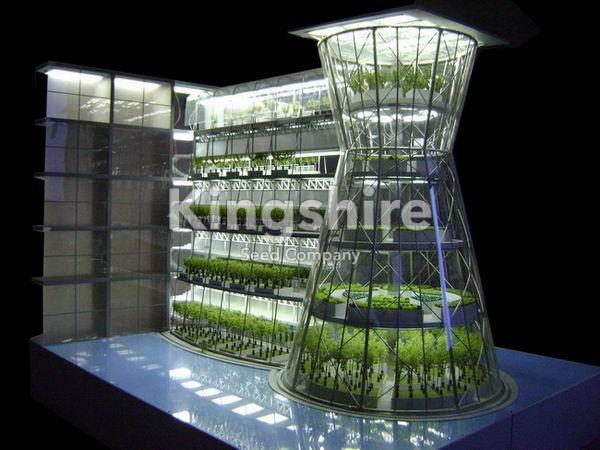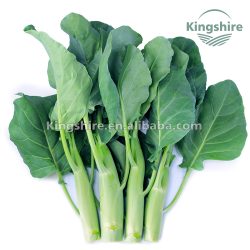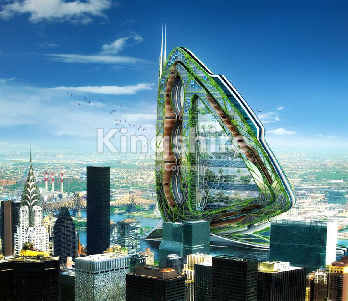
Source: www.greenyourope.net
Introduction:
Agriculture is one of the most extensive and demanding human activities on Earth. With a population of seven billion to feed the stress on the environment is tremendous with respect to water consumption, land usage and the fossil fuels burnt throughout the whole process till the final produce reaches consumers. With the human population expected to reach 9 billion by the year 2050 the challenges seem to be overwhelming unless we think of something radical. The answer for such a radical solution could lie in developing urban farms. This article is a vision that looks at a possible self sustainable community in a world of rapid urbanization.
Urban Farming

Source: www.roumazeilles.net
Urban farming simply put is the process of cultivating, processing, distributing and marketing of food crops grown in and around an urban area. An urban farm can also include the raring of livestock and fishery. In the complex web of globalization the idea of urban farming bring in a sense of self sustainability within a community. There can be different form of urban farming each adding value in its own way.
Backyard or roof top farming is a personalized set up that caters to the need of individual families. These are practiced more for their recreational purpose than the idea of self sustainability. A backyard farm would be ideal to grow veggies and fruits.
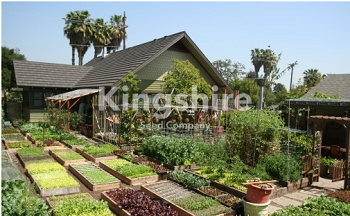

Source: www.examiner.com Source: www.nytimes.com
Another form of urban farm is community gardening where in the local community participates in cultivating crops that are suited for them and are most consumed. These kinds of farms will not only act as recreational activity but also bring in a new way of socializing.

Source: greenfusestock.photoshelter.com
Greenhouses are another kind of urban farm in which a controlled environment is created to produce crops locally. The greenhouses unlike others urban farms are professional and scientific in approach. Due to their controlled environment the crops are protected from any insects or pests that could reduce the net yield.
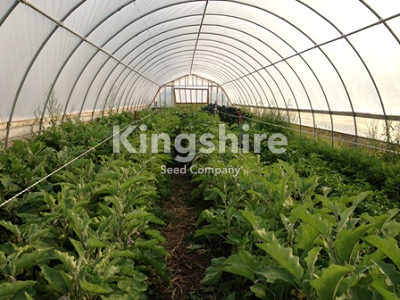
Source: www.minneapolismn.gov
The need for urban farms
Urbanization is rapid and so is the poverty associated with it. With more and more people shifting towards urban area in the prospect of making a better living, especially in developing countries, the problem of poverty too has migrated towards the cities. Food insecurity is a critical issue as prices in the urban area makes nutritious food almost inaccessible to the people in the lower strata of the urban community. The survey data of FAO shows the average vegetable and fruit consumption in countries of Latin American and Caribbean followed by the recommendation of the average consumption by the WHO.
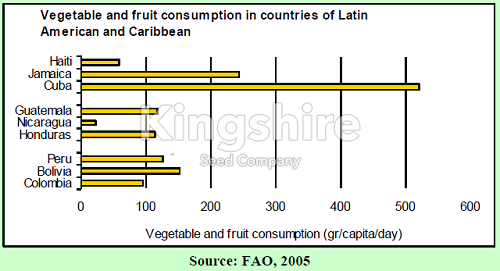
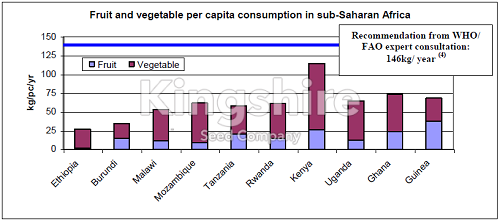
The reports of the FAO suggest since the price rise in 2003 the countries that had been doing well in alleviating hunger are finding it increasingly difficult to feed all of its citizens. Some of the primary reasons of high food prices are the amount of fossil fuels involved in the production of food and the distance the food produced travels to reach its consumers. With distance also comes other expense of storage and processing food to prevent early rotting. All these and more combined add to the cost of food prices. Urban farms will not only reduce the distance traveled by your food and reduce carbon foot prints but it also generates employment for the local population. They also reduce the carbon foot print of the food produces to a very large extent pond per pound.
Modern Urban farms are highly eco friendly and self sustainable. In fact it is possible to feed thousands in a community with absolutely no use of fossil fuels with a well designed urban farm. Hydroponics is a technique that allows growing plants without the need of soil. All the nutrients required for the growth of the plant material are made available in the form of water solutions. The water used can be harvested from rain. The excess drain of water can be used to simultaneously to rare fishes. The unused foliage and crops can be used to create compost that rear worms and these worms in turn could be fed to the fishes. The fish dropping can be recycled to be used as nutrient supply for the crops. This way the water can be recycled several times before it can be drained away and we create a highly self sustained and eco friendly system. So imagine a future where high rise buildings would be producing food crops. These vertical farms could be the answer to the food insecurity of the rapidly urbanizing world.
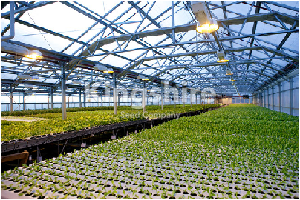
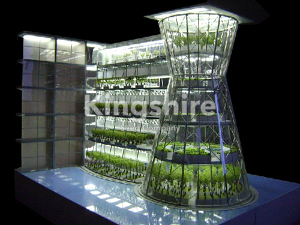
Source: www.businessweek.com Source: http://www.ecofriend.com
Other benefits of urban farms
Apart from the above mentioned benefits there are several other positive effects that urban farms could have on the community. Some of them are mentioned below
- The creation of urban farm will increase the green cover of the urban areas. This in turn will help purify the air and combat the effects of air pollution on the health.
- Urban farms can lend to the aesthetic values of the city or a locality
- Urban farming will encourage many small scale entrepreneurs and even corporate investment that will generate employment
- Urban farming could bring about a new trend in recreational activity. This could also bring about a new form of social binding that will help in the overall development of a community
- Urban farms can also play a role in soil remediation of contaminated soil in the urban area
- The presence of urban farms could bring about positive changes in the micro climate.
- More the 1/5th of fossil fuel produced is utilized for agriculture. Urban farms can greatly reduce the carbon foot prints agriculture.
Challenges confronting the development of urban farms
The prospects of having urban farms are likely to face several challenges. Some of them are listed below.
- Availability of fresh water will be the biggest challenge in cultivating crops in cities.
- High land prices in the cities will challenge the economic feasibility of having urban farms.
- The soil in urban areas is likely to be contaminated by lead, Cadmium and other organic and inorganic toxin which are hazardous to health. Growing plants on these soils could lead to bioaccumulation of the toxic elements. The urban soil also has high pH and low organic content.
- Acceptability of food grown in untraditional manner could also pose a threat to the idea of having urban farms
- Urban farms could lead to higher levels of pollen grains dispersed in the atmosphere that could cause related health issues
Conclusion
According to the projection by the UN by the year 2030 two-thirds of the world population will be living in cities. It is also estimated the by the year 2020, 85% of the poor in Latin America and about 45% in Asia and Africa will be living in Cities. These projections not only concern food insecurity but also the human right implications that tag along with it. As the percentage of slums in the cities are on the rise, the quality of life of the average city dweller decreases. Urban farms may not only bring in new geography for agriculture but the associated changes that it could bring about in the cities seem highly positive in terms of employment, food security, reducing carbon footprint of the food we eat, community building and the associated health benefits . The significance of Urban farms in combating the various issues mentioned above has been acknowledged by various private research works and public bodies like the UN and FAO.
Reference:
- Baudoin, W., & Drescher, A. (2008). Urban agriculture for sustainable poverty alleviation and food security. In Urban Farming. FAO. Retrieved from http://www.fao.org/fileadmin/templates/FCIT/PDF/UPA_-WBpaper-Final_October_2008.pdf
- DE ZEEUW, H., VEENHUIZEN, R. V., & DUBBELING, M. (2010). The role of urban agriculture in building resilient cities in developing countries. InUrban Farming (pp. 1-11). AB Leusden: Cambridge University Press. Retrieved fromhttp://www.bis.gov.uk/assets/foresight/docs/food-and-farming/science/11-564-sr19-role-urban-agriculture-building-resilient-cities.pdf
- Knowd, I., Mason, D., & Docking, A. (2006). Urban agriculture: The new frontier. In Urban Farming(pp. 1-22). Vancouver: Retrieved from http://www.agf.gov.bc.ca/resmgmt/sf/plan_food/Presentations/8_Mason.pdf
- Brock, A. (2008). Room to grow: Participatory landscapes and urban agriculture at nyu. In New york: Retrieved fromhttp://wildgreenyonder.files.wordpress.com/2008/09/room_to_grow.pdf
Source: http://www.seedbuzz.com/knowledge-center/article/urban-farming
 English
English
 German
German
 French
French

